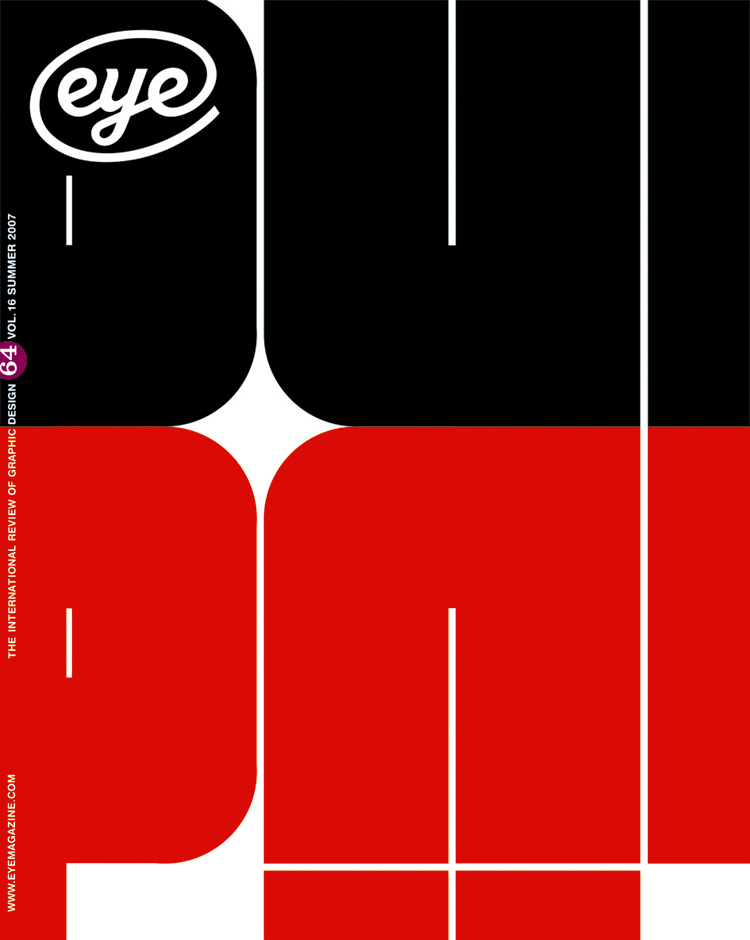Summer 2007
From the typographic to the visual
Penguin by Designers
Edited by Steve Hare and Phil Baines. Penguin Collectors’ Society, £15. Available online only, at penguincollectorssociety.orgThis book’s title is a librarian’s nightmare. It differs by only three letters from that of a previous title (Penguin by Design, 2005), and one of its editors, Phil Baines, is the author of that earlier book, Penguin by Designers is likely to confuse future researchers and students. However, those who succeed in identifying both publications will find that these books complement each other perfectly.
Although the new book has the same subject as the earlier one – the (cover) design of Penguin books between 1935-2005 – the two publications could hardly be more different. Baines’s book was an ambitious overview of one company’s design policies throughout its existence. Penguin by Designers is, essentially, a collection of personal stories from some of the people who gave form to these policies over the past 50 years, recorded during a one-day gathering on a hot day in June 2005 at London’s Victoria & Albert Museum.
That occasion was the 2005 Penguin Collectors’ Society study day, when six of the most eminent Penguin designers and art directors of Penguin Books gave talks. As Phil Baines relates in his introduction, the idea for that year’s programme came into being during the preparation of Penguin by Design. It was suggested by fellow Penguin historian Steve Hare while reading the draft of Baines’s book. Hare was the driving force in completing the programme and, together with Baines, edited the present book. They decided to add one previously written text by Germano Facetti, who couldn’t make it to the V&A (he died less than a year later). This brief article outlines the ideas behind the key changes in Penguin’s design policies made during Facetti’s reign as cover art director in the early to mid-1960s. All other texts were transcribed from the tapes and then edited by the speakers themselves.
In most accounts written by scholars and journalists, design history is described in terms of ideas and, to a lesser extent, technology. Other aspects, such as chance meetings, camaraderie, the tenacity of individuals, the clashing of personalities, tend to be overlooked or underplayed. Yet these anecdotal aspects are just as crucial for the evolution of design culture. That is just one of the things that the personal stories in Penguin by Designers make clear when read next to Penguin by Design.
A defining moment in the history of Penguin design is what Facetti called ‘the transition from the “typographic” to the “visual”.’ Among collectors – the people by and for whom Penguin by Designers was made – there is quite probably a fraction who are convinced that Penguin’s visual decline begins here. To them, the ‘real’ Penguin covers are those following the horizontal or vertical three-band grid perfected by Tschichold. However, Penguin would not have survived if it had not changed; and it is refreshing to read the step-by-step accounts of the people who brought about those inevitable changes, despite being in awe of Penguin’s reputation and institutional status. The story told by Romek Marber, the man who devised the ‘Marber grid’ that is reproduced on this book’s cover, and which defined the look of the 1960s crime series as well as many fiction and Pelican titles, is particularly inspiring. It simply demonstrates that behind the images that have become part of the collective consciousness, there is often no master plan – just a few people who get on well and have good ideas. Jim Stoddart’s overview of the present situation suggests that this is the case even today, now that the marketing departments seem to call the shots.
Having said that, the book’s status as an account of a one-day event and a kind of keepsake for members of the PCS, has resulted in a few peculiarities that haven’t completely been resolved by the editors. For one thing, it takes some time to realise that the ‘I’ speaking in the italicised first paragraphs of each contribution is not the same person as the person who wrote the piece, but Phil Baines, and that these introductions are probably based on what Baines said on that day in June as the programme’s presenter. It makes the booklet come across as an item for the chosen few, which seems unnecessary.
On the contrary, Penguin by Designers should be required reading for all those who study British book design, just as much as Penguin by Design already is. In the history of print design, Penguin presents a virtually unparallelled case: its combination of visual and editorial intelligence with mass appeal is probably unique. This wonderfully unpretentious book is equally special in offering Penguin readers – all of us – a glimpse of what was, and is, going on behind the scenes.
Jan Middendorp, designer, writer and author of Dutch Type, Berlin
First published in Eye no. 64 vol. 16 2007
Eye is the world’s most beautiful and collectable graphic design journal, published for professional designers, students and anyone interested in critical, informed writing about graphic design and visual culture. It is available from all good design bookshops and online at the Eye shop, where you can buy subscriptions and single issues.

